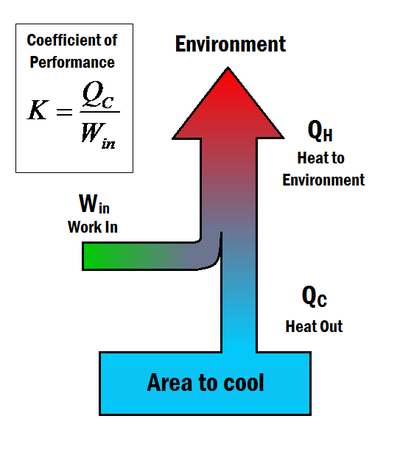Coefficient of performance: Difference between revisions
No edit summary |
m (1 revision imported) |
(No difference)
| |
Revision as of 22:53, 18 May 2018

Coefficient of performance (K) is a number that describes the effectiveness of refrigerators or air conditioners, by comparing the heat that is dispelled from it to the work that had to be done to do so. It is similar to the thermal efficiency of heat engines, as they both relate what benefits you are getting to what you had to pay.[2] The coefficient of performance is given by the equation:
where:[2]
- is the heat dispelled from the refrigerator
- is the work input to the system
- is the coefficient of performance
A better refrigerator will require less work to remove a given amount of heat, thus having a larger coefficient of performance. From the equation, it is clear that if no work was input to the system () the coefficient would equal infinity. This would constitute a perfect refrigerator, which is forbidden by the Second law of thermodynamics. Hence, .[2]
Maximum Coefficient of Performance
Just like there is a thermal Carnot efficiency, there is also a Carnot coefficient of performance, which describes the maximum K value for a refrigerator. This is given by the equation:
where:[2]
- is the temperature of the environment to which the heat is dispelled to
- is the temperature of the space to cool off
- is the maximum coefficient of performance

